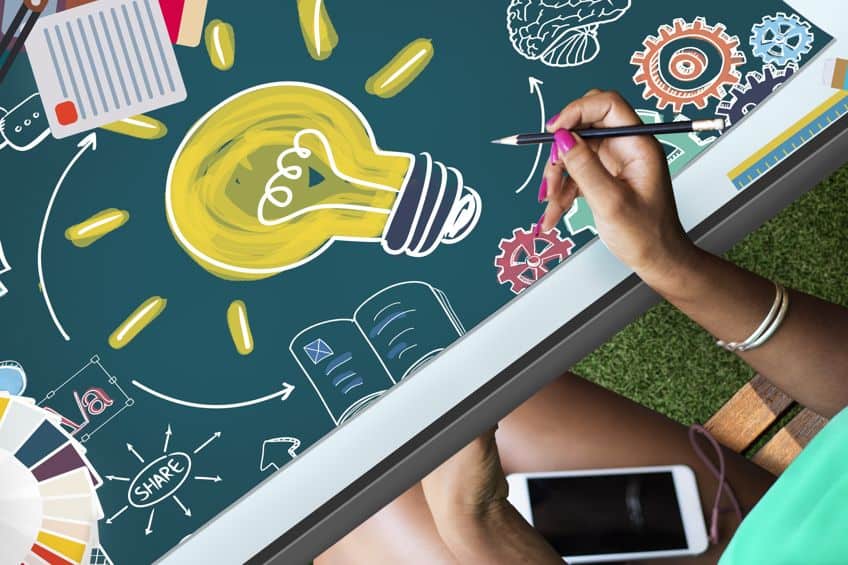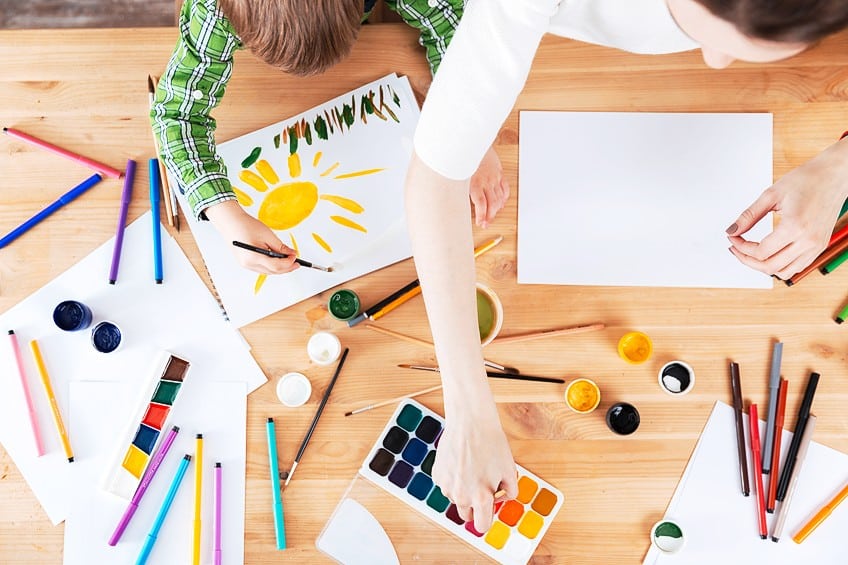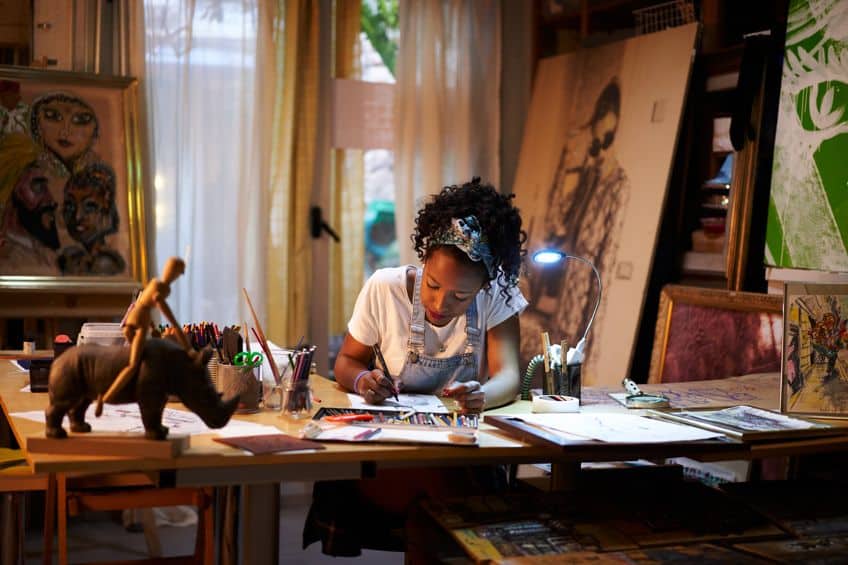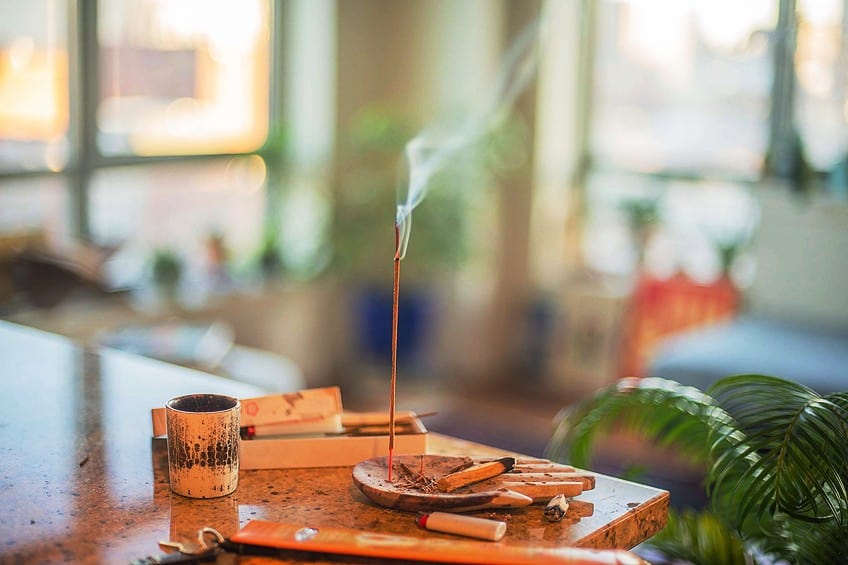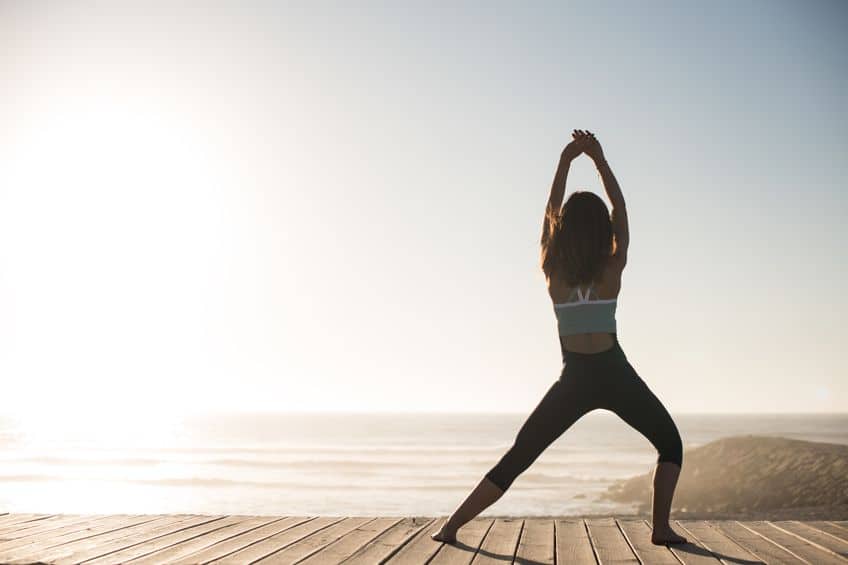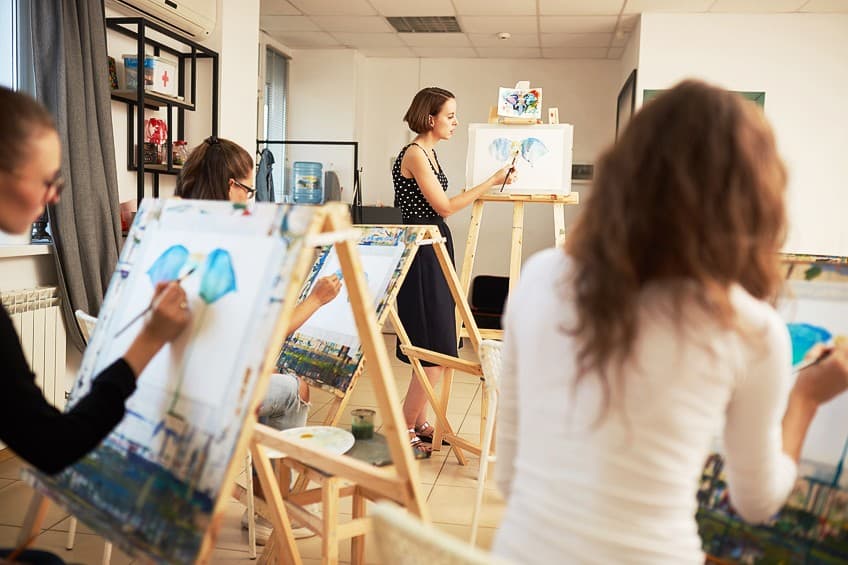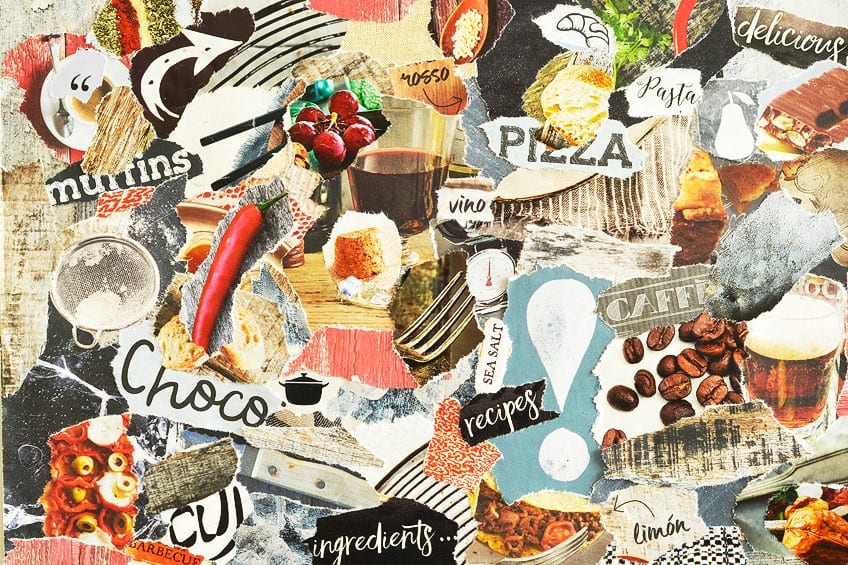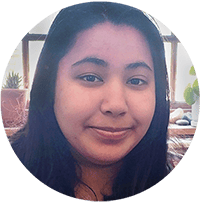How to Be Creative – Exploring Different Ways to Be Creative
Since the dawn of mankind, we have used symbols, signs, images, shapes, body movements, and textures to make sense of the abstract elements of life. Art has thus been part of our collective existence from the beginning. However, a “quick-fix” culture driven by social media and pressure on professional production has removed us from our inherently creative nature. This makes trusting your creative intuition hard. In this article, we will explore multiple ways to reconnect to your innate creativity and live a more artistic life.
How to Be Creative
Creativity theorist Dr. Clarissa Pinkola Estes writes that all we need to do to be more creative is to get out of our own way. However, in a world that prioritizes production, consistency, and logic it can sometimes be hard to know how to find your creativity. Most professions prioritize reason as the decision-making compass and have very specific requirements that do not allow for creative freedom.
It helps to think of being creative as taking care of a plant. You need to cultivate the right growing conditions for your creativity to thrive in.
In this article, we will discuss some “ideal growing conditions” for how to get creative in your everyday life. We start with the importance of boredom. We discuss how to cultivate a creative mindset and how embracing the idea of being a beginner can help to start your creative journey.
How to create a physical and imaginative space for your creative practice by building consistency and routine is also explored.
We share insights about how to use embodiment exercises and play to be more present and focused while you create. The benefits of reaching out to other creatives and following your inspiration to shows, exhibitions, and concerts are considered. And we give you a lot of prompts to start a visual diary practice, a vital part of being more creative!
Do Nothing More Often
Creativity requires an empty mind. In her Ted Talk, Manoush Zomorodi discusses the importance of doing nothing in the forming of new ideas. She argues that the brain needs time to process all the daily inputs before we get great insights, but we tend to keep ourselves too busy with technology.
Doing nothing for half an hour to an hour each day can be extremely formative in becoming more creative.
You can practice watching how you want to distract yourself when the intention is to do nothing. This awareness can lead to a centered and focused creative practice. Doing nothing in nature is one of the best ways to empty the mind and invite new ideas.
Natural forms are calming to the mind and if you commit to sitting long enough, you will see that there is always something beautiful to observe.
Cultivating a Creative Mindset
Getting out of your own way to be more creative starts with your mindset. In the analogy of creativity being a plant, your mindset would be the water. Creativity needs a nourishing and encouraging internal discourse. The key to having a positive creative mindset is to accept that creativity is not reserved only for a specific group of people called artists, nor is it limited to specific activities like dance, music, visual art, or theater.
Creativity is a way of being. It is a practice that enriches all parts of your life when allowed.
Embracing Your Creative Self
Some people will acknowledge that they are creative, but not artists. Others will talk about a specific craft they do, but express that they do not think of themselves as being creative. This exposes an underlying belief that only certain people and things can be categorized as “creative”. However, the reality is that there are many different ways to be creative.
Dressing up, decorating your room, gardening, baking, and even your relationships with others can be considered creative acts. In fact, creating your life is also a very creative act.
So, once you accept that you are a creative being by nature, you can let go of harsh judgments and blocks that might bar you from actively being more creative. Once a person starts calling themselves an artist, very few people will contest that. Speaking about and claiming a creative life can be a very liberating act.
Stepping into the role of the artist or creative can often be enough to catalyze a person’s creative process.
When you think of yourself as being creative, you are open to the inspiration and ideas that everyday life offer. Everything becomes art and material for projects. To get to this place, it could be helpful to reflect on the limiting beliefs you hold about being creative. Explore these questions in your artist’s journal (see more about journaling exercises lower in the article):
- Do I call myself a creative or an artist? Why or why not?
- What makes me creative?
- How do I speak about my creativity in the company of others? Am I overcritical, negative, or breaking myself down? What can be a more productive and encouraging change of language that would reflect my willingness to learn and grow?
- How do I speak to myself about my creativity? Is this way of thinking benefiting my creative process or not?
The Beginner’s Mind
Acknowledging that you are a beginner can be equally as freeing as embracing that you are creative by nature. Like in the Buddhist practice called “The Beginner’s Mind” you assume the position of an “innocent”. Someone that knows nothing and can therefore learn and grow a lot. If you are an experienced artist this can also be a catalyzing practice. It shakes the dust and depression off of a stagnant practice and allows you to see past your trained ideas. Experienced artists can as easily get stuck in their minds and block the productive flow of creativity as beginners.
The reality is that there is a never-ending treasure trove of artistic things to explore in this world.
There is always more to learn. Letting go of what is comfortable is difficult and the fear of wasting your time can keep you blocked. That is where imagining that you know nothing and have absolutely nothing at stake can be freeing. Cultivate space in your creative practice for making mistakes.
If you allow yourself the freedom to fail, you will also have more room to explore.
Research different mediums in which to explore a concept and consider various ways to capture what it is you want to express. At the beginning of a more creative life, you need to keep an open mind and try as much as you possibly can.
If something feels uncomfortable – like you went to a horrific painting class or your drawings were not selected for a competition – reflect on the lessons the experience brought you. Take your time to develop your pallet. After a while, you will start to notice a trend in your taste and interest.
You can start to follow these inclinations and create an artistic identity that feels authentic and informed.
Creating a Space to Be Creative In
Now that you have cultivated a positive and open mind, you can consider the space your creativity will occupy. The “ground” to the creativity plant is the space you cultivate for artistic practice. It is what keeps your practice rooted and growing. Without a space where you can express yourself, you will be sitting on many ideas for years.
The space required by creativity is a physical, emotional, and imaginative space. The physical space is a studio, the emotional space is the discipline you bring to your practice, and the imaginative space is the aspect of ritual and mystery you allow it.
The Studio
Create a desk, corner, or book where you can physically practice creativity. The studio is an important necessity for someone looking for ways to be more creative. However, your studio does not have to be a big space. It does not even have to be a whole room.
It can be a desk, a couch, a corner on the carpet, or in front of the fireplace.
You can create a small art kit for yourself that is easy to take out when you want to practice. Make this space special by decorating it with things that inspire you. You can stick up your artist values (see later in the article) and role models that bring you creative courage.
Showing Up
After you have accepted a creative identity, you need to commit to the practice of creativity (whatever your chosen craft might be). The reason the old masters are called “masters” is that they committed focused time and energy over years to develop their skills. Rome was not built in one day, therefore an essential part of how to get creative is setting out focused time to practice your craft.
Showing up regularly at your work desk or in your studio is vital, even if you do not feel creative all the time.
A culture of instant gratification brought on by the popularization of social media has created the idea that all things need to happen fast. But the reality of the creative life is that there is often a lot of time that feels “wasted”. This time spent in the studio that feels unproductive or fruitless is a core part of the creative practice that should not be ignored.
It is this play and “messing around” that creates fertile soil for great ideas to sprout from.
Be sure to create a routine of sitting down with the craft you want to practice and, initially, allow a lot of space for experimentation and aimless play. This emotional space you afford your creativity by showing up creates a baseline of trust and commitment.
Cultivating a Creative Ritual
Now you are in your studio – often – but maybe it is still difficult for you to get started. You might find yourself distracted by your cellphone or get caught up in cleaning and organizing your space instead of focusing on your craft. This feeling of distractedness could also be called ungrounded. So how do you ground your creative practice?
It helps to have a ritual for when you intend to be creative as it gives you a little recipe to repeat every time you want to start.
This recipe will give the brain a clue that it is time to be present and open to creativity. If this ritual is multisensory, even better! The brain tends to use multiple sensory cues to log specific activities. A multisensory ritual, before you start practicing your craft and if repeated over a long time, let’s the mind know that it is time for creative play, experimentation, and relaxation. A multisensory studio ritual could look something like this:
- Scent: Light a special incense stick/essential oil/candle.
- Sound: Put on a specific playlist/album.
- Taste: Make a special tea or beverage.
Cultivating “Flow-States”
Once you get into creating there is a level of ‘flow’ that can be experienced in your practice. Flow simply means an alert, focused, but relaxed awareness. It also relates to the trust needed in the collaboration with the mysterious forces of creativity. Ideas can be cultivated and worked on but a key part of creativity is entirely mysterious and outside our control.
To flow is to open up space for spontaneity and the mystery of creativity while being focused and present.
Mikayhli Czikszentmihalyi’s theory of flow suggests that to embody the sense of flow fully we should be immersed in a feeling of energized focus and be fully involved in the current moment. Flow is a state where the outside distractions recede and the mind is fully open and tuned into the act of creating.
To flow is to connect completely to something. This means that when we allow ourselves into this flow state, we contribute to and activate our creativity.
Flow, like creativity, is not something unique to certain individuals. It is rather a state of being we can all tap into when we allow ourselves time without distraction. It is an important part of the creative practice as being more creative requires a lot of focused time. Here follows two ways to activate a flow-state.
Drop Into the Body
During a creative flow state, the mind is interconnected, and the prefrontal cortex (the critical part of the brain) is less active. This brain activity looks similar to experienced meditators and can be cultivated by practicing body awareness. Anxiety and fear, along with other difficult emotions we would rather not feel, tend to get stuck in the body. We tend to intellectualize our feelings and experiences to the point where we rarely focus on what our bodies are feeling.
If these feelings of anxiety about creating or judgmental thought patterns are ignored, they can often block us from being more creative.
It helps to focus on sensations to become more body conscious during the act of creating. Focusing on the sound of the pencil on the paper, the texture of the paint, the feeling of the brush gliding over the canvas, and so on can help the critical mind to relax and release into a flow state.
Doing a simple breathing exercise with closed eyes before you start making something can bring awareness to the difficult emotions that might be standing in your way. Focusing on your breath also brings an awareness of the thoughts that come into your mind while you are trying to focus.
Practicing to put these thoughts aside and continue with the creative task you are busy with can bring ease and flow to your creative practice.
Any mindfulness practice can therefore help you to stay creative for longer. Stretching before you start creating is also a great way to cultivate body awareness. Putting on music and dancing can make the creative process light-hearted and fun. Shaking your body and jumping up and down can release tension. Be aware of how to sit while you create.
It can be helpful to change your position or chair at your studio desk so that it disrupts patterns that you might have from working at a desk. Be creative with how you bring your body into your creative process. Going for a walk after a long day of work can help to split the day from work to play.
Walking is also a fantastic way to catalyze imaginative thinking, as it helps the mind relax and gives you new perspectives!
Play
Researcher Stuart Brown’s definition of playing for adults is “time spent without purpose”. When we are young, we can spend hours drawing in the sand, tracking the movements of bugs, and conversing with flowers or clouds. At some stage in our development, we lose this ability to do things without a to-do list. Brené Brown’s research reflects that “wholehearted” adults spend time on things that are just fun and that do not necessarily help them achieve a goal. Furthermore, she found that play is at the core of human creativity and innovation.
This is echoed by Picasso, who said: “Every child is an artist. The problem is how to remain an artist when we grow up.”
This shows us that our inherent creativity is something that the “adult” world of work, stress, and anxiety stifles. If we neglect play and shame ourselves for spending time on things that are considered unproductive, our lives and our identities start forming around what we do instead of who we are. In this sense playing is an act of radical self-acceptance and love. What better way than to play creatively?
Most adults feel like they have to justify why they want to explore ways to be more creative. But the reality is that doing creative activities just because you want to and find it fun can bring balance to your life. Creative play means to do creative acts without obsessing over the final product; to simply enjoy the act of creating itself.
Creative play involves a lot of curiosity and experimentation.
Henri Matisse famously attached his paint brushes to the end of long sticks to release more control of how he painted. This “non-attachment” brought a playful element to his practice, famously evident in his vibrant use of color, and exaggerated forms. When you start feeling overly judgmental towards yourself think of new challenges you can create for yourself to invite play back into your practice.
Charging Your Archive
It is not always clear where creative ideas come from. Some are born from hard work and research, while a sudden flash of insight brings about others. The randomness of inspiration makes researching other forms of art a worthwhile investment. Feeling lonely in your creative life can make giving up easier.
But if you surround yourself with others’ active creative energy, it sustains your creative energy.
Follow Your Inspiration
Creative ideas are stimulated by multiple things, one of them is enjoying other media that inspire you. Watching movies, and visiting art galleries, museums, and open studios can all add to the drive to get creative. If you want to express yourself in the medium of music, attending concerts, album launches, or hanging out in coffee shops where live music is performed can be very inspiring. If you want to get into dancing, find a park or club where people practice movement together.
Read books, listen to podcasts, or do a YouTube search on the creative world you want to emerge yourself in.
This is another important place in your practice where you should watch your inner dialogue for self-critique that might block you instead of inspiring you. A vital belief to having a healthy creative life is understanding that each creation is unique and each artist has their own journey to get to a place of authentic expression. It can be discouraging to constantly compare yourself mentally to others instead of enjoying artistic events.
See these activities as a way to charge your subconscious and creative archive.
Instead of trying to mold yourself to the example of exhibiting artists, performing musicians, or champion bakers, enjoy their unique expressions with respect. Allow their concepts and ideas to inspire you while creating space for your unique flair to mix with their influence.
Building a Community
Creating in isolation is another by-product of education systems that teaches competition instead of collaboration. Most creatives think they need to make it in the world alone, but again, when we look at our species’ origin, we can see that we have always worked creatively in groups. Other creatives bring a fresh perspective to your work and a cacophony of resources and skills.
Collaboration is a great way to keep you accountable for showing up for your creativity. Involving others in your creative process can also assist in letting go of control, as more opinions require flexibility.
Starting an accountability date with a friend where you are creative in the same space could be a lovely way to be more creative. Repeating the multisensory studio ritual and sharing reflections on the creative process together can help keep the creative fire alive. Joining a club or society can catalyze a more creative life with an active community.
You do not have to only hang out with people that practice the same craft as you.
It can bring fresh perspectives to be around people that do not see themselves as particularly creative, as they already express their opinion from the Beginner’s Mind perspective. Joining a hiking club to paint the views; gardening with friends to learn more about plants; or hosting a dinner night so you can share your poetry can all create the experience that you are supported as a creative.
How to Find Your Creativity with a Visual Diary
Logging inspiration and collecting ideas is an invaluable part of the creative process. A special space where you muse and reflect creates a well-thought-through and intimate creative practice. Collaging images that inspire you can lead to compositional studies and sketches.
You can even play around with creating mind-maps of concepts that are connected to the various projects you are working on. Taking notes during exhibitions and scribbling down an idea you got in line at the shops can greatly enrich your artistic life.
All of these activities done in a diary can develop into concrete artworks.
Writing Prompts to Start an Artist Journal
Sitting down once a day or a few times a week to reflect on your creative life is a special part of being creative. It creates structure and intention in the way that you work creatively. Here are a few prompts you can write about to start your process.
- What inspires me? Think of colors, artists, textures, and concepts.
- What are my creative values? These values can include playfulness, curiosity, exploration, and so on. You can also write a few affirmations as part of this list. For example, “finding ways to get creative is a valuable way to spend my time”, “I am learning and I am allowed to make mistakes”, “being creative enriches my life in many ways”, and so on.
- What is my intention with this book? For example, “I intend to be kind and curious in this book”, “I intend to write about my creative process with compassion and perspective”, “In this book, I will pen down ideas and develop them”, and “I will draw at least once a week and collage during the weekend”, and so on.
- What draws me to painting/writing/sculpting/photography and so on?
- What are your creative dreams? Is there a specific series you would like to paint, a new medium you want to explore, or a specific subject you want to study in your visual diary?
A Collaging Exercise to Get Into the Creative Flow
Often you just have to start a non-directional, fun artwork to get you in the creative mood. You can take inspiration from any small exercise you do in your visual journal. Take it with you everywhere and create exercises for yourself.
Consider practicality and create a time limit for these spontaneous creative acts.
You can try to draw one person each day for a week while you have a quick coffee in the mornings, or do a small oil study of the trees in the park. Collect postcards, stamps, adverts, and movie tickets and make a practice out of sticking them into your diary once a week.
Inspiration is consolidated into ideas if you write a little about why a specific element touched you.
Try to link everything you put into your diary to the project (or projects) that you are working on. At the beginning of your visual journal, you can try this collage exercise to start your process. The key is to do this entire exercise as quickly as possible.
- Page through a magazine as quickly as you can tearing out everything that stands out to you. Do not take longer than a few seconds to decide whether to include an image or not.
- Look at your images and separate them into “yes” and “no” piles. Again, try to do this without too much consideration – this is not a Tate Modern art piece yet.
- Tear the “no” pile into rough pieces.
- On a piece of paper, construct a landscape in the background out of the torn pieces. Consider color, perspective, and texture as much as you want. Work intuitively and enjoy the process.
- Make cut-outs out of the images on your ‘yes’ pile. You can choose to use the entire image or cut out elements of the picture.
- Create a composition of the cut-out images over the torn-up landscape.
- Write a narrative in your diary about the image you created quickly and intuitively. You can write about what the images say about your creative practice.
Have Fun!
Although creativity is a practice it is fueled by passion. Creativity cannot live without joy. To be more creative, you need to practice art out of pleasure. You might be able to create some art under harsh self-judgment and perfectionism for a while, but what is the purpose of that.
The main takeaway from all of these tips is that simply starting the process is always the best way to be more creative more often!
It is always better to try something creative, and fail than to sit on your ideas for years until they become stale. Brené Brown writes about how perfectionism crushes creativity. Art simply does not fit into neat categories that we have created for life on Earth. It is the messy, abstract, bizarre, and random residue of human experience. In that way, art is delightfully imperfect. This makes being creative a stress-free and accessible way to live a fuller life.
To be more creative requires you to consciously engage with your inner narrative around making art. The practice of being more creative involves coming up with fresh ideas to keep your process interesting and energizing. If you do not carve out time weekly to focus on practicing your craft or connecting to your creative intention in your visual diary your creative plant will wither and die. Interrogating limiting beliefs, perfectionism, and stale modes of working will shake up your practice and bring it the nurturing elements it needs to grow. And above all, it is important to make joy the center of your creative mission!
Frequently Asked Questions
Is There a Cut-Off Age in Life When It Is Too Late to Start Practicing Creativity?
There is no age limit to bringing creativity into your life. There is this idea that being creative is reserved for a certain kind of person or activity, but this is simply not true. Many artists discover their creative passion later in their lives and often only start perusing it after having a career in a non-creative field. Be aware of not using age as a block to your creative expression – it can be just another limiting belief keeping you from living a fuller life.
Do I Have to Sign Up for Classes to Become More Creative?
You absolutely do not have to join a course or class to discover your creative voice. If you commit time and create a special place in your life to develop your artistic voice, you can easily be more creative in an intuitive way. However, there are perks to having a community of creatives around you. Whether you join a class or not, you will still need to work on your skill in your own time. Be sure not to put off creative play while you wait for a class that interests you.
Do I Need Fancy Materials to Be More Creative?
Art is an extremely accessible hobby. The materials you use are not important at all when you start your creative journey. It is just about starting the process and using fancy materials can sometimes bar the freedom of expression. Use what you have around you in the beginning. Be curious about different materials and kitchen items. For example, ink and bleach have a very interesting reaction to each other, a strong coffee solution can make perfect paint, and food coloring can have an interesting effect when used instead of ink. Remember to be playful in how you solve the problem of which materials to use.
Megan is a writer and researcher who holds a degree in Social Sciences, with a specialization in Psychology and Environmental Science, from the University of Cape Town. Her dedication to acquiring knowledge and making a positive impact has driven her current work in promoting conscious and sustainable growth in Southern Africa. Megan’s interests encompass exploring the physical and psychological impacts of color in our environment on our mood and well-being. She is also passionate about the role of art and creativity, which has been an integral part of society since the beginning of human history. Since 2022, Megan has been contributing blog posts on painting and color theory at artfilemagazine.
Learn more about Megan van Schoor and about us.
Cite this Article
Megan, van Schoor, “How to Be Creative – Exploring Different Ways to Be Creative.” artfilemagazine – Your Online Art Source. July 21, 2022. URL: https://artfilemagazine.com/how-to-be-creative/
van Schoor, M. (2022, 21 July). How to Be Creative – Exploring Different Ways to Be Creative. artfilemagazine – Your Online Art Source. https://artfilemagazine.com/how-to-be-creative/
van Schoor, Megan. “How to Be Creative – Exploring Different Ways to Be Creative.” artfilemagazine – Your Online Art Source, July 21, 2022. https://artfilemagazine.com/how-to-be-creative/.



